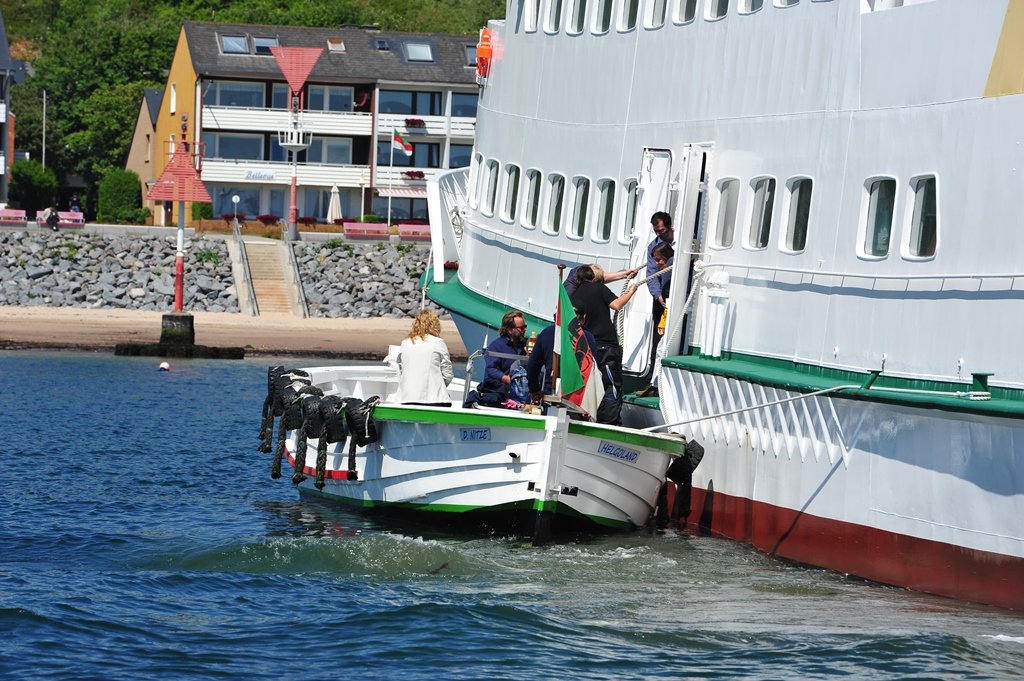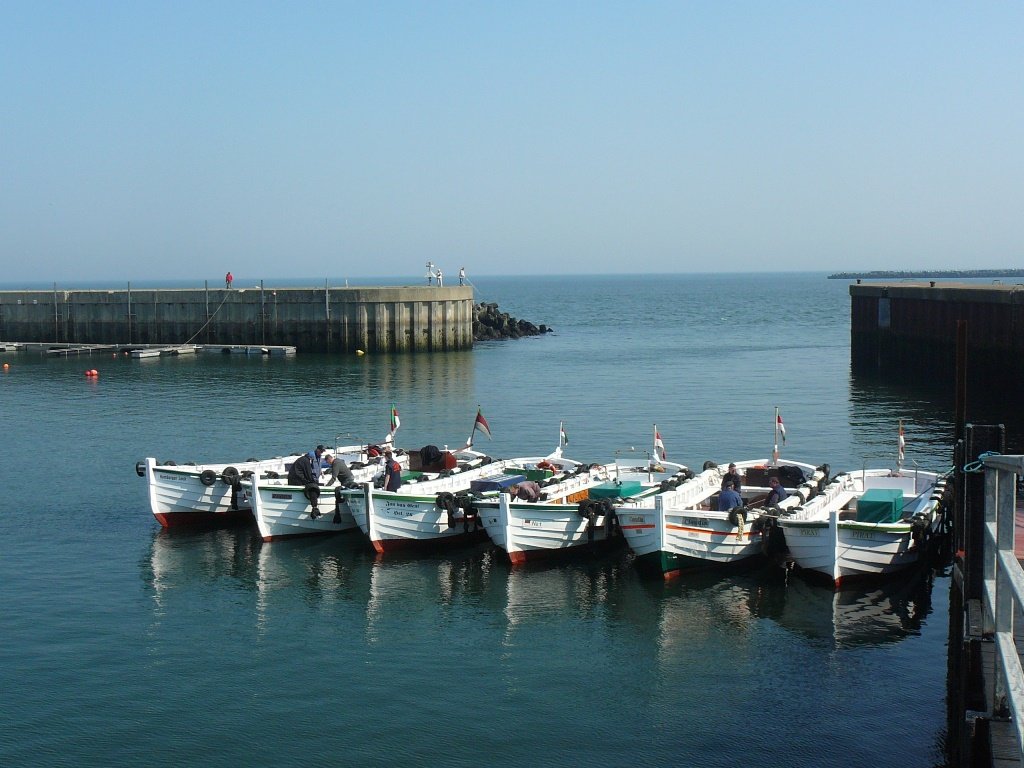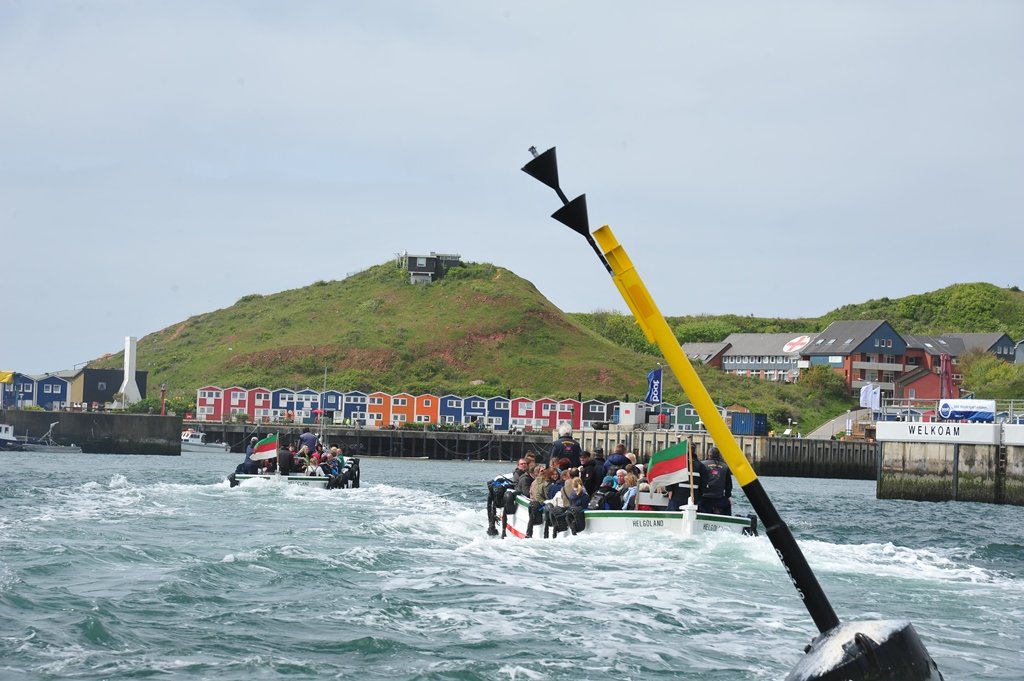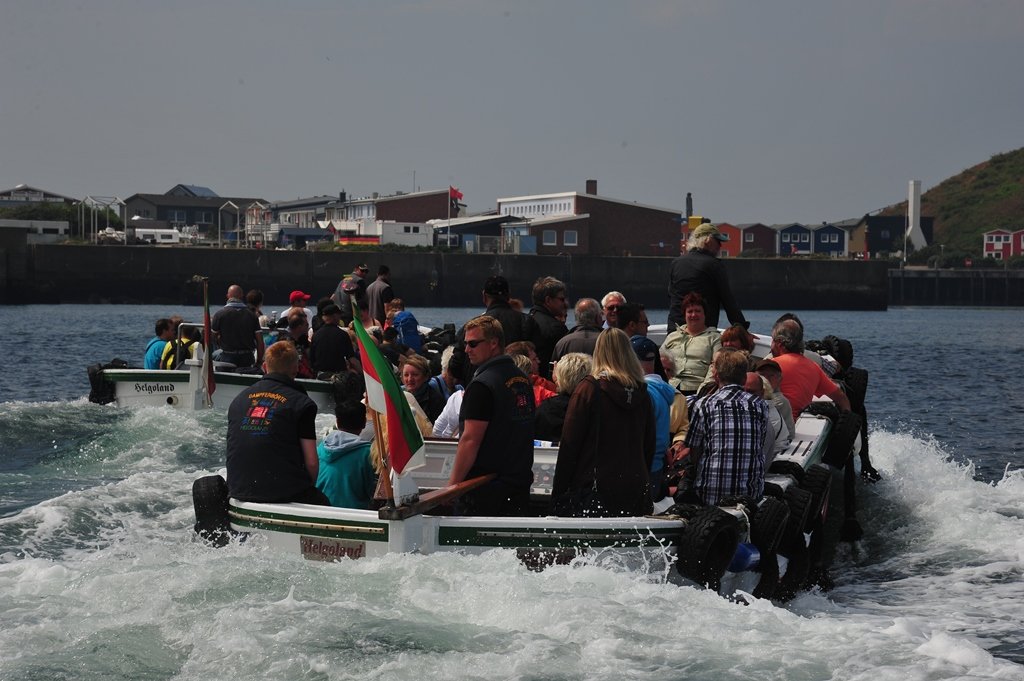Nationwide Inventory of Intangible Cultural Heritage
Heligoland‘s Steamboat Service

The maritime tradition of Heligoland’s steamboat services has been passed on from generation to generation. Small wooden boats carry passengers of the ocean-going vessels at anchor from board and aboard. One boat can take up to 40 passengers. The steamboats have shaped the typical flair of the island Heligoland and are part of the rough but friendly visitors’ welcome experience. Today the tradition is still an important element of the identity of Heligoland’s inhabitants and its visitors.
Facts & figures
Crucial date: Beginning of April to mid-October
Inscription: 2018
Domains: Knowledge and practices concerning nature and the universe, forms of social self-organization, oral traditions and expressions
Where to find: Heligoland
Contact
Holger Buenning
holgerbuenning@hotmail.de
Stefan Pfeifer
pfeifer@helgoland.de
Heligoland’s steamboat service functions as transport means to get from ocean-going vessels to the mainland and back. Even though there are actual harbours in Heligoland due to limited capacities, the municipality of Heligoland cannot allow all ships to enter these. However, to enable visits to the islands, the idea of the steamboat service has been developed.
Each vessel provides two crew members that help passengers to get from the big ship to the smaller steamboat. Once they are on the steamboat, a crew member welcomes the passengers and leads them to their seats. The luggage is taken separately. Wheelchair users can be easily carried to the island as well. The little steamboats go straight away to the jetty in the very centre of the island. Therefore, passengers don’t need to take on the long distance from the actual harbour to the city centre.
The crew of the steamboats safeguard an old mariner‘s tradition. For a long time, the tradition has also been an inspiration to marine painting and photography. In the remoteness of Heligoland, the maritime tradition of the steamboats has an identity-creating character for the islanders and is a special experience for guests.






